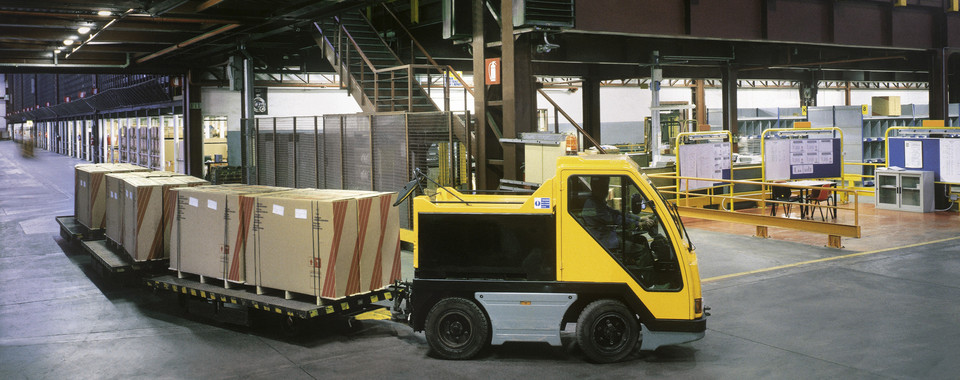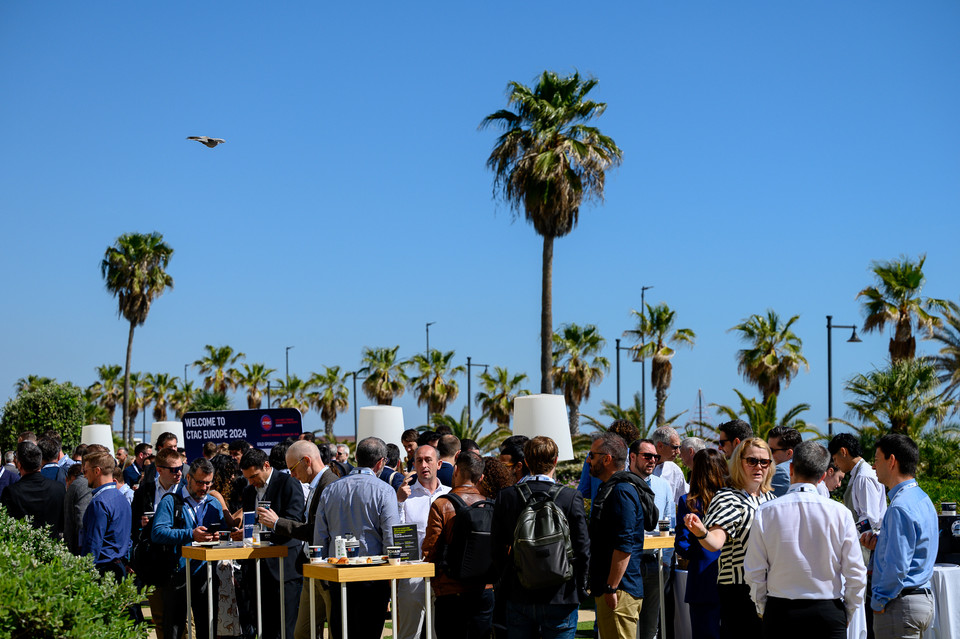
Apr 14, 2025 // Zdravka Ley
More than just in a circle: How tugger trains are changing internal logistics thanks to intelligent management
Why intelligent tugger train optimization is crucial.
Apr 16, 2025 Kira Biernat
ShareIt’s already been two weeks since the maritime world gathered in Valencia for the Container Terminal Automation Conference (CTAC) Europe 2025—but the buzz hasn’t quite settled. While we’re all back at our desks, the energy of the event still lingers, as do the conversations sparked on stage and off.
As always, the lineup of speakers delivered insight and inspiration—with a fun twist this year: ChatGPT made several guest appearances. It became very clear that AI is not just a hot topic in the port and terminal industry but a part of our daily toolkit. Even our own Rafael Velásquez got in on the action, snapping a photo of the conference room mid-session and asking the chatbot for a description—an amusing and telling way to explore the "eyes and ears" of AI in action.
While our industry is often perceived as conservative or slow to adopt new technologies, we’ve actually come a long way—sometimes in quiet but significant leaps. As Frank Kho of atai pointed out, it’s only been around 70 years since the standard cargo container was introduced. What started as one trucker’s frustration with inefficient cargo handling led to a global shift in how goods move around the world. That kind of innovation reminds us that meaningful change doesn't always happen overnight, but it does happen—and it lays the foundation for what’s next. If we’ve come this far since the 1950s, there’s every reason to believe the future holds even more transformation.
Kicking off the conference, Mar Chao from the Port of Valencia emphasized that success lies in cooperation. This simple, powerful statement set a cooperative tone echoed throughout CTAC 2025. Norbert Klettner from RBS further captured the essence by asserting that visibility creates trust, spotlighting connectivity and transparency as key drivers for operational success.
Yet, the dialogue around connectivity quickly revealed layers of complexity. During a panel on the topic Building the foundation for the terminal of the future, the need for a so-called single “source of truth” entered the room. However, it soon became apparent that “truth” in connectivity is still subjective—clarity and mutual understanding among systems, rather than uniformity, emerged as the realistic goal.
Will there ever be a single source of truth?
This is also where initiatives like TIC4.0 come into focus. The committee, dedicated to advancing standardization in the maritime industry, earned well-deserved praise from many of the speakers on stage. At CTAC, we didn’t just talk tech—we talked TIC4.0. And we realized it’s a conversation we need to have much more often. Because without common standards, even the smartest solutions can’t reach their full potential.

“If you had unlimited resources, what would you automate first?” Gabriela Ruano from CONROO asked during one of the panel discussions—a question that instantly sparked both reflection and amusement. Answers ranged from the serious (equipment moves, safety) to the cheeky (“a trip to the Bahamas”). But beneath the laughter was a clear point: automation isn't just about machines; it's about improving the day-to-day reality for people on the ground.
That sentiment shaped much of the discussion around automation at CTAC. The conversation is moving away from seeing full automation as the ultimate goal. Instead, it’s becoming about strategic alignment—identifying what level and type of automation truly benefits each terminal’s specific needs.
When Dorota Korenkiewicz and Max Mühlemeyer from the maritime branch of Boston Consulting Group presented the initial findings of the Digital Ports Benchmarking Study, they reinforced this point: not every container terminal aims to achieve the highest possible score in digital maturity. Instead, it’s about helping operators reach the level of digitalization that best aligns with their specific goals and operational needs.
In the end, the smartest move isn’t to chase what everyone else is doing—it’s to find the path that makes your own operations more productive, flexible, and future-ready.
Identify what level and type of automation truly benefits each terminal’s specific needs.
That brings me to a point that’s as clear as it is crucial: meaningful change starts with a strong foundation. Time and again, speakers reminded us that successful digital transformation isn’t just about the technology—it’s about the groundwork that precedes it. Bas Mötter from Solid Port Solutions urged the industry to take a step back and define clear goals before rushing into vendor decisions or tech implementations. Similarly, Yvo Saanen from Portwise aptly noted that while laying the foundation may not be the fun part of a project, it's absolutely essential.
Que Tran from DP World added an equally important layer to the discussion, emphasizing that for change to succeed, you first have to believe in the benefits of the path you’ve chosen. I really enjoy the idea that beyond all the calculated ROI and technical specs, mindset matters.
But don’t be fooled: once that foundation is set, the work is far from over. “Go-live is the start of high-performance, not the goal,” as Kaj de Groot from Portwise put it—a reminder that implementation is just the beginning, not the finish line.

Among all the discussions on data models, automation paths, and system interoperability, we should not forget: none of these advancements exist in a vacuum. They directly impact the people working on the ground—those who operate equipment, manage yards, and keep cargo moving every day. Martin Tremblay from Montréal Gateway Terminals reminded us that transformation must not only be technological, but also human. It's easy to get swept up in innovation, but success hinges on involving the people who will ultimately live and work with the systems we implement.
If we want sustainable progress, we need to make space for the practical knowledge and concerns of terminal staff—not after deployment, but from the very beginning.
CTAC 2025 reminded us that while technology continues to evolve, the real drivers of transformation remain cooperation, clarity, and the human side. That’s not just progress—it’s purposeful progress.
And the conversation doesn’t stop here. With the Intermodal Container Terminal Conference (ICTC) by PTI just around the corner in Düsseldorf on April 23–24, and TOC Europe following in June, we’ll have more chances to dive deeper into the industry’s most pressing challenges. Whether it's tracking digital maturity, shaping new automation strategies, or continuing the work of initiatives like TIC4.0—there’s a lot more to talk about.
About our Expert